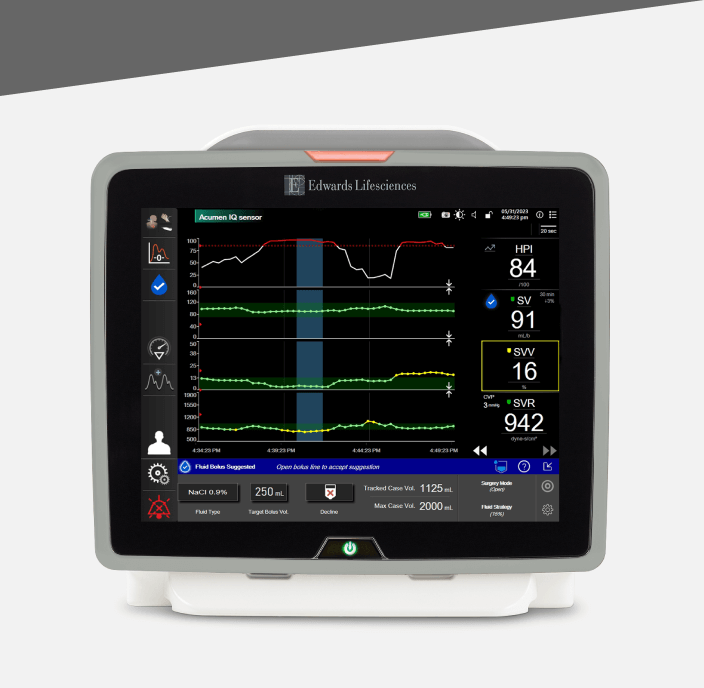Predicts
Predicts your patient's fluid responsiveness
Optimize fluid administration with predictive decision support

Edwards Lifesciences Critical Care product group is now part of BD (Becton, Dickinson and Company). Edwards is the manufacturer of the products.
To find the latest information, please visit this page on BD.com
Acumen Assisted Fluid Management (AFM) software uses an algorithm to make individualized fluid recommendations so you can optimize fluid administration.
Predicts your patient's fluid responsiveness
Provides individualized fluid recommendations
Automatically tracks volume administration and flow rate in real time
Unlocked by Acumen IQ sensor, Acumen AFM software recommends boluses based on an algorithm that predicts fluid responsiveness using a patient's hemodynamic data and past responses to fluid administration.
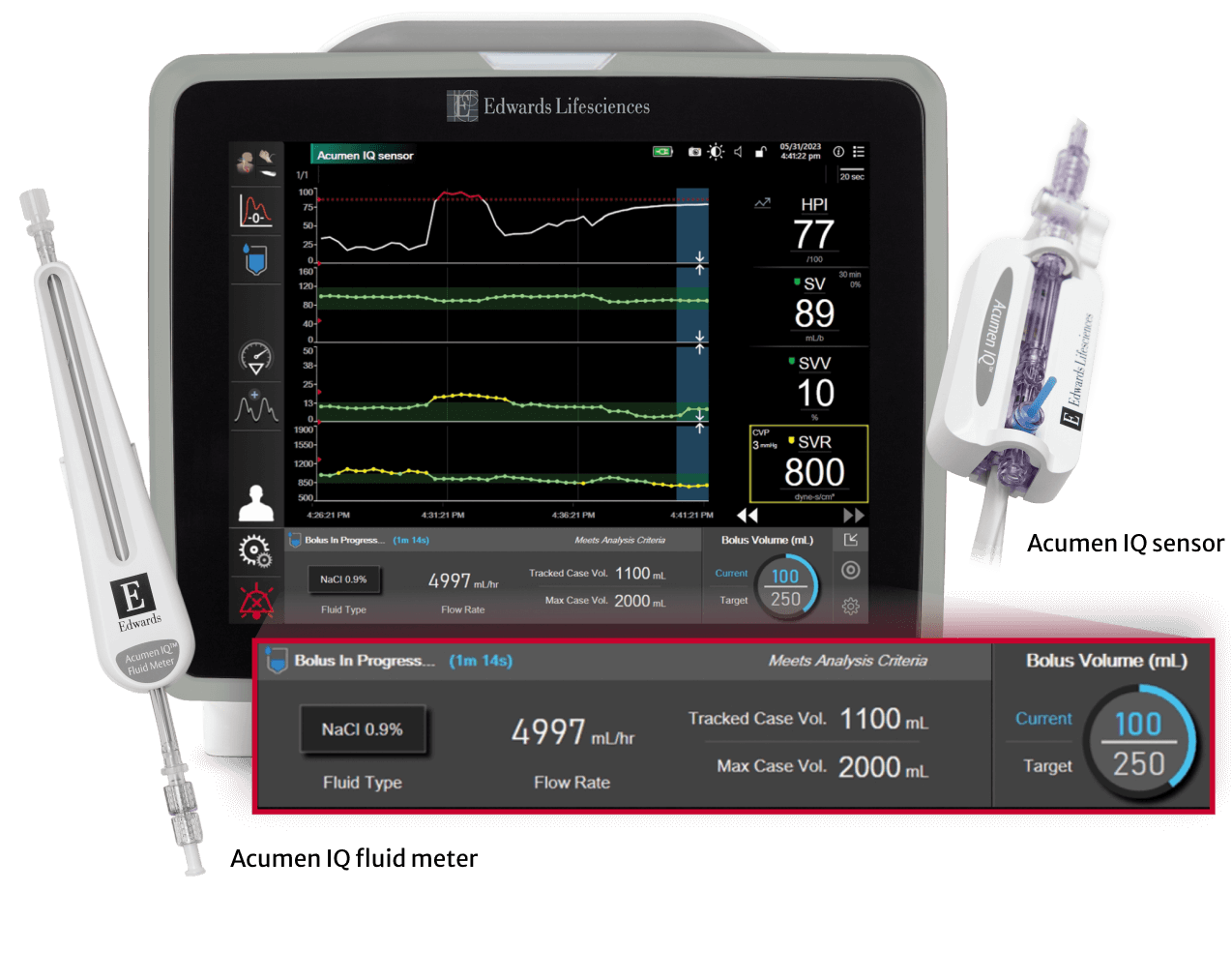
Keep patients in the optimal fluid range with individualized bolus recommendations based on patterns of fluid responsiveness. Throughout a procedure, Acumen AFM software learns from the patient’s response to each analyzed fluid bolus to optimize its future recommendations.
Acumen IQ fluid meter automatically tracks volume administration and flow rate in real time.
Model numbers
| Model numbers | Description | Length |
| AIQFM10 | Acumen IQ fluid meter (10-pack) | N/A |
| AAFMC | Acumen AFM cable | N/A |
| AIQSFM65 | Acumen IQ sensor with fluid meter (5-Pack) | 60 in/152 cm |
| AIQSFM85 | Acumen IQ sensor with fluid meter (5-Pack) | 84 in/213 cm |
| AIQSFM6AZ5 | Acumen IQ sensor with fluid meter with VAMP adult system (5-Pack) | 60 in/152 cm |
| AIQSFM6C502 | Acumen IQ sensor with fluid meter with VAMP adult system and TruWave pressure transducer (5-pack) | 60 in/152 cm |
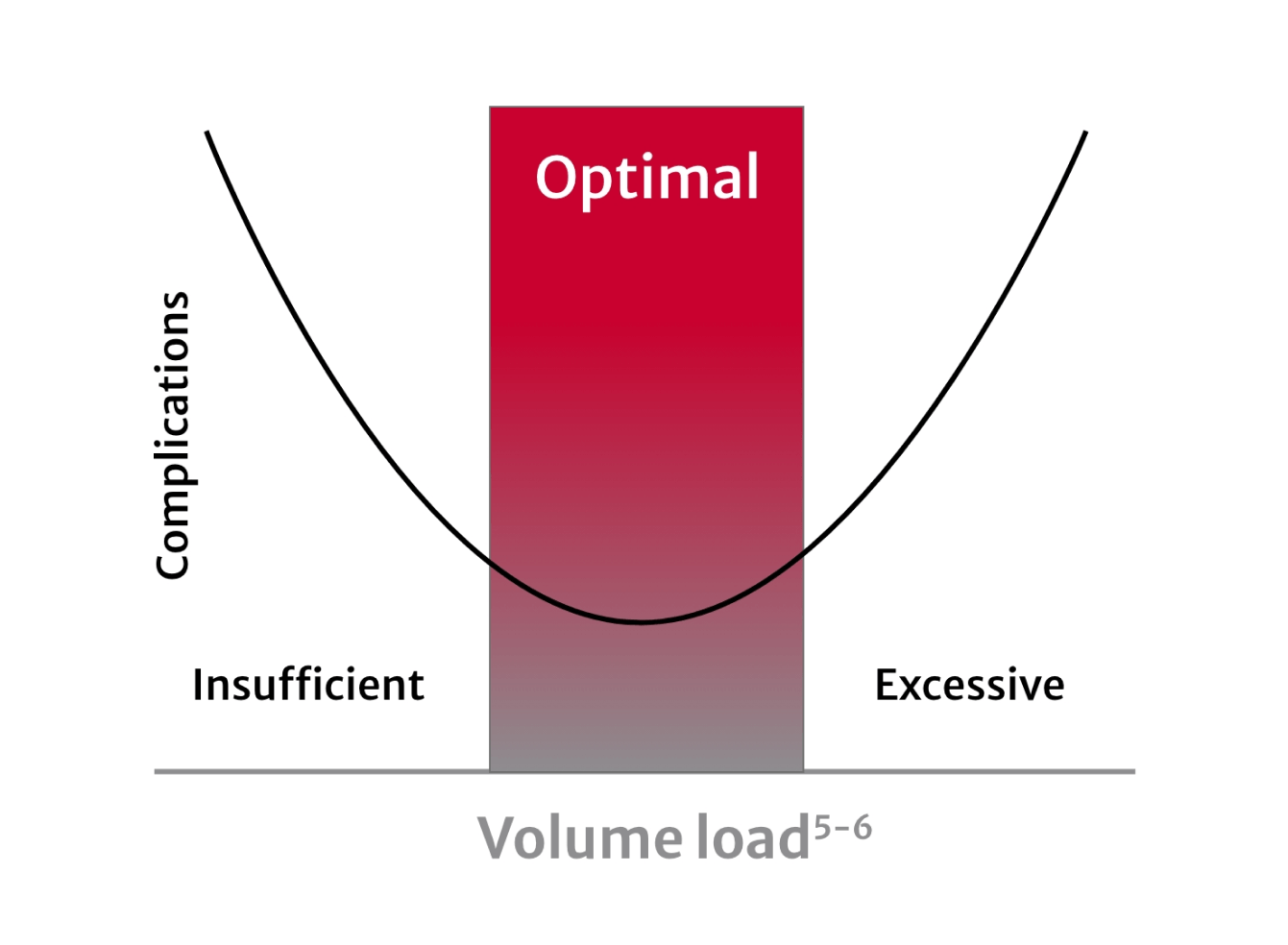
Maintaining patients in the optimal volume range is key. Insufficient and excessive volume administration are associated with complications such as GI dysfunction.1-4
Acumen AFM software provides individualized fluid recommendations, enabling you to optimize fluid administration.

Acumen AFM software is part of the Acumen software suite of intelligent decision support solutions.
With access to advanced hemodynamic monitoring that provides continuous pressure and flow parameters, you gain valuable insight into the adequacy of perfusion – all displayed on HemoSphere monitor.
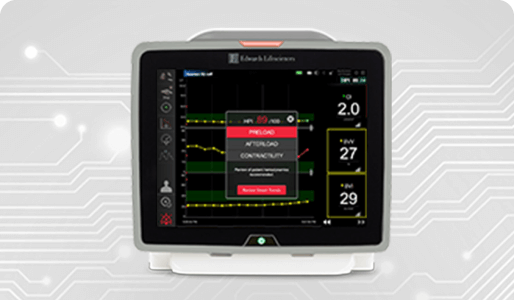
Acumen Hypotension Prediction Index (HPI) software

Acumen IQ cuff*
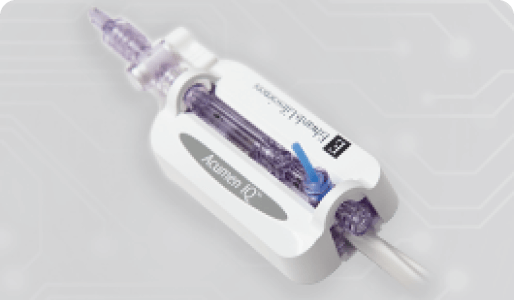
Acumen IQ sensor
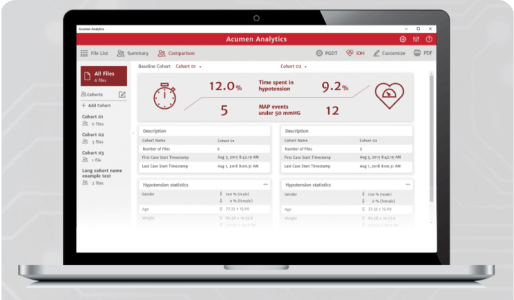
Acumen Analytics software
*Acumen HPI parameter is indicated for surgical patients only when using an Acumen IQ cuff
CAUTION: Federal (United States) law restricts this device to sale by or on the order of a physician. See Instructions For Use (IFU) / Directions For Use (DFU) for full prescribing information, including indications, contraindications, warnings, precautions and adverse events.
We are committed to providing your institution, clinicians and staff with the highest levels of customer service and support to ensure seamless product implementation and ongoing use, including:
24/7 Technical support
For product information and orders
